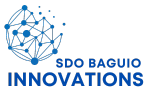Building Bridges
Lillie Addag-Vinluan
School Head
Proponent
The Problem
241 out of 742 Grade 1 to 6 learners who took the pre-test in the Functional Literacy Assessment (FLAT), belong to below grade level literacy standard.
The Context
The low functional literacy is attributed to limited early exposure to literacy; inadequate instructional methods and strategies; socioeconomic factors; emotional and behavioral factors; lack of parental involvement and; learning disabilities.
Stakeholders Pain Points
LEARNERS
“No mastery of the alphabet sounds”
TEACHERS
“Limited time in developing literacy and appropriate instructional materials.”
PARENTS
“Authority and structure and variety of approaches”
“Time constraints”
BARANGAY OFFICIALS
“Time Constraints and collaboration”
The Solution
Bridging Boxes per each Grade Level
Box 1: Learning Activity 1 (Manipulatives)
Box 2: Learning Activity 2 (Picture aided materials for collaboration)
Box 3: Learning Activity 3 (Personalized Learning Activity Sheets)
Box 4: Interactive games and applications through technology
- Teachers will prepare the personalized boxes and their contents
- Parents/ Guardians will help their child/children in school (if they have time to be in school) and at home using Box 3 and Box 4. Instructional Guides will be given to them.
- Box 1 and 2 will be done in the classroom while box 3 and 4 can be done at home but that will depend on the learners’ performance in doing the other boxes.
Challenges
- Commitment and Instructional Strategies of Teachers
- Support of Parents/ Guardians and Community
- Attitude of Learners towards Literacy Development and Attention/ Focus including Learning Styles
- Lack or limited gadgets in the classrooms and at home
- Limited knowledge of teachers in using different teaching apps
Needed Resources
- Reading Materials
- Personalized Learning Activities
- Manipulatives
- Assessment Tools
- Internet Connectivity
Source:
MOOE
Monitoring & Evaluation
The proponent will be using “Results-Based Monitoring and Evaluation” (RBME) approach by Robert Picciotto who is focused on results and impacts rather than activities and outputs.
In doing so, collaboration is needed to define objectives in doing the project and success indicators including data collection, analyzation of data collected, evaluation of progress and reporting.
Other activities for M & E will be:
Regular Classroom Observation
Teachers’ Feedback
Learners’ Feedback
Parents and Guardians’ Feedback and Involvement
Assessment Scores and Progress Tracking
Collaboration to reflect and identify issues and ways forward
Adjustment of instruction based on data
Lillie Addag-Vinluan
School Head
Proponent



